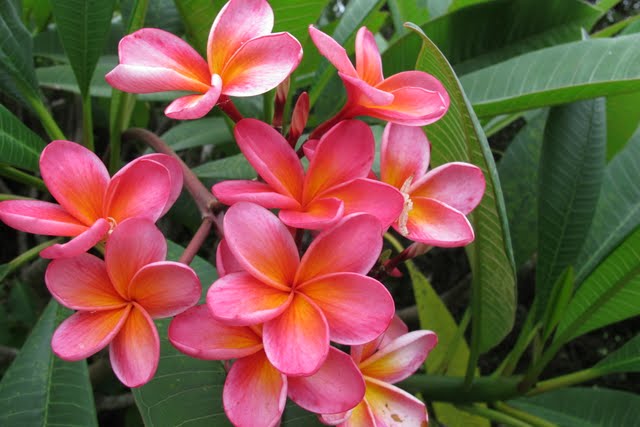

There Plumeria, commonly called Frangipani, is one exotic ornamental plant grown in apartments for the beauty of its leaves and the beautiful color tones of its splendid flowers.
General characteristics
There Plumeria or Pomelia, is a plant belonging to the Apocynaceae family native to tropical countries and Central America.
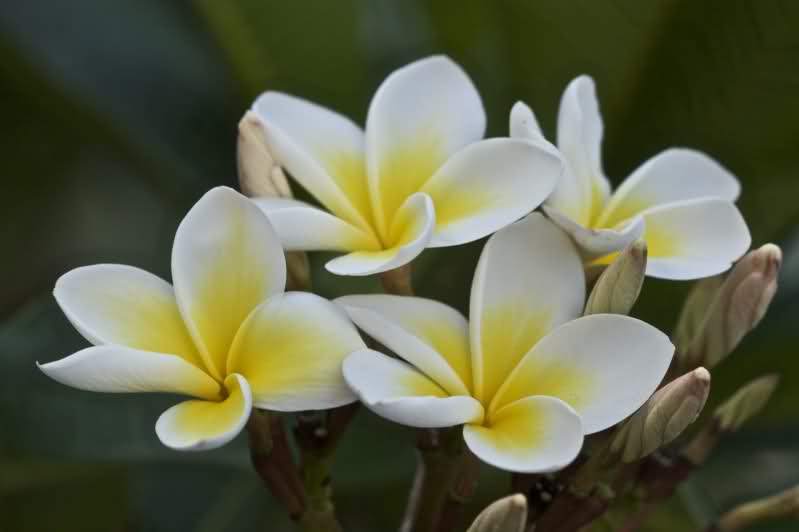
All species belonging to this genus are provided with a robust root system.
The aerial part, well developed, has a shrub-like crown rich in branches covered with large ones leaves dark green ovals.
At the apex of the branches, in flowering period, they bloom big flowers decorative gathered in clusters, similar to those of the oleander, whose color varies according to the species from white to pink, from yellow to orange to ruby red.
Read also: Nature at home: 10 ways to give a touch of life
At the end of flowering, on the Plumeria green pods appear containing small winged and light seeds which take many months (about 8) to mature.
Flowering
Plumeria, if grown with the right techniques, blooms from late spring (May) until all summer.
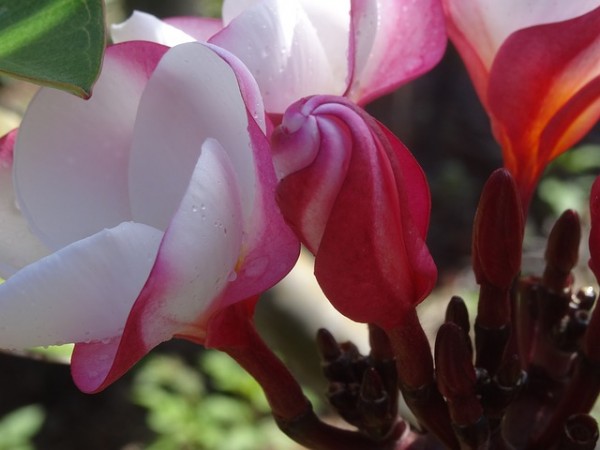
Frangipani cultivation – Plumeria
Exposure
The Plumeria plant loves bright and sunny places sheltered from winds and direct sunlight during the hottest hours of the summer months. Therefore, it fears the cold in areas where winter temperatures drop below 5 ° C, it needs a shelter in a protected environment.
Ground
To develop strong and vigorous, the plant requires fertile soil, rich in organic substance, soft and well drained. In general, it is sufficient to mix equal parts of the universal soil with pieces of coarse bark and sand.
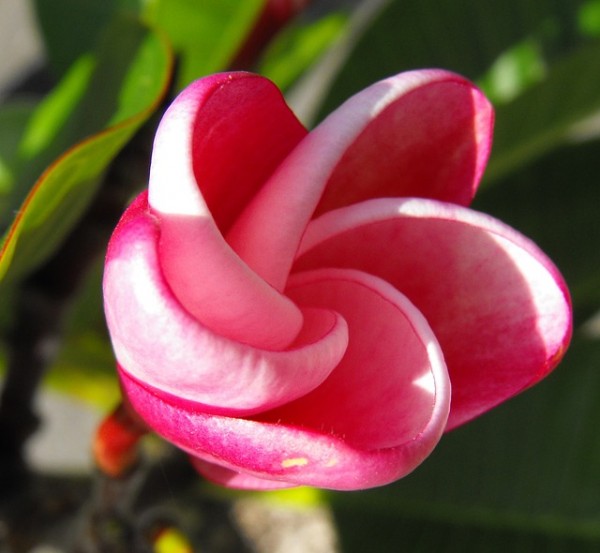
Watering
It needs regular and constant watering from spring to summer, avoiding water stagnation in the saucer, the causes of root rot. Watering should be done only when the soil is completely dry. When the leaves begin to detach from the branches, the water supplies must be suspended.
Fertilization
From the vegetative restart of the plant (spring) and throughout the summer, every 2-3 weeks, give some liquid fertilizer specific for flowering plants, diluted, in the right doses, to the watering water. During the flowering period, Pomelia should be fertilized twice a month, with a fertilizer with a higher phosphorus (P) content. The fertilizations must be suspended in the winter months as the plant enters dormancy.
It might interest you: 10 mistakes in furnishing a very small apartment
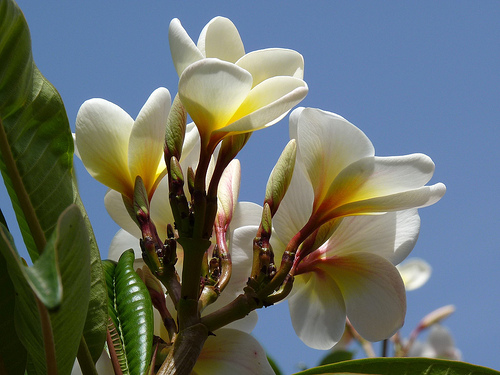
Pomelia or Plumeria: cultivation in pots
This exotic plant should be grown in pots in the climatic zones characterized by harsh winters, in order to be able to transfer it to a protected place. The suitable pot must have a minimum capacity of 4 liters and preferably so that it has enough space to grow; it is better to choose a black colored container instead of clay ones, due to the porous nature of the latter which causes the roots to stick to the walls and the moisture disperses too quickly.
Repotting
The Plumeria should be repotted every year in April using new soil and pots about double the size of the root system and preferably those of black plastic.
Multiplication of Pomelia
Plumeria multiplies by cutting or by seed.
Sowing
Seed multiplication takes longer and the new plants will not be identical to the original one.
To shorten the germination times, Plumeria seeds must be kept for at least 24 hours wrapped in a damp sheet of kitchen paper and when they are swollen enough they are buried in a pot with specific soil. The seeds are buried about 5 mm deep, with the swollen part facing the bottom. The seedbed must be kept moist and placed in a warm place until the sprouts appear, which will sprout after about a week or a month.
When the seedlings born from seed reach a height of 7-8 cm, they can be transferred individually to larger pots, taking care not to damage the fragile roots.
New Pomelia plants will flower about 3 years after sowing.
Multiplication by cuttings
The propagation of Plumeria by cutting is very simple and ensures plants identical to the reproduced species.
Using well-sharpened and disinfected shears, apical shoots are taken and the cuts are allowed to air dry for at least 2 days.
When the cuttings are totally dry, the cuttings are impregnated with a rooting hormone and then rooted at a depth of 5 cm in a container filled with a mixture of peat and sand which is always kept moist throughout the rooting period. Once rooting has taken place, the plants are left to strengthen and only when they are easy to handle can they be transferred to the ground or into a black plastic pot of adequate size for root growth.

Pruning
Pomelia does not need to be pruned frequently and generally intervenes to eliminate any apexes damaged by the cold or to shorten those that are too long in order to stimulate the production of new shoots. Pruning should be done at the end of winter by shortening the branches by 1/3 of their length.
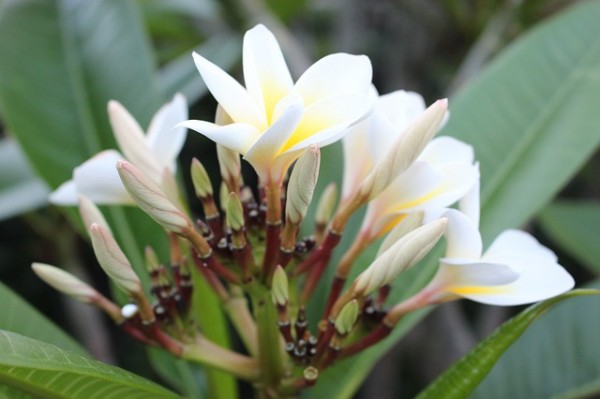
Diseases and parasites of Plumeria or Pomelia
Frangipani suffers from the attack of cochineal, red spider mite and rust. Among the fungal diseases it is prone to root rot if the cultivation soil is not draining.
Plumeria frangipani care
- Elimination of dry branches and withered flowers.
- Periodic cleaning of the leaves, removal of those possibly stained and damaged by parasites.
- Use of a biological pesticide.
Variety of Plumeria – Pomelia
Among the many ornamental species we remember those most cultivated in pots and in the open ground
Plumeria rubra
A shrub species about 10 meters high. It has stems with lanceolate, deciduous leaves, arranged in a crown at the apex of the branches. The very fragrant flowers are gathered in inflorescences at the base of the leaf axils. The corolla of the flower consists of 5 to 7 white, yellow, pink or red petals. It blooms from June to November. The branches and leaves, if broken, emit a whitish latex.
Plumeria rubra acutifolia
If you live in an area where temperatures drop below 5 ° C in winter, grow plumeria in pots.
Plumeria acutifolia is a species with long pointed leaves. It produces very fragrant flowers with ovate, fleshy and bicolor petals with lemon yellow jaws. It is a cold-resistant variety and therefore suitable for outdoor cultivation even in areas where temperatures drop below 5 ° C.
Plumeria obtusa
It is a small tree native to the West Indies that reaches a height of 3.0 to 4.6 m. It has green leaves, shiny and about 20 cm long. Its flowers are the corolla composed of five white obovate white petals with a yellow throat. The fragrant flowers bloom in clusters, in summer from the end of June. It is a fast growing ornamental plant suitable for cultivation in Mediterranean gardens and in pots. Broken branches produce a skin-irritating latex.
Plumeria pudica
A small-sized species native to America widespread in Panama, Colombia and Venezuela.
It has a compact conical crown with spatulate leaves. shiny and dark green. The flowers are odorless with white petals and slightly yellow tinged jaws. It cannot stand the cold and needs at least 6 hours of sun to produce abundant blooms. In the places of origin this plant is called “milk flower” in reference to the whiteness of the flower petals.

Is Plumeria frangipani poisonous?
There Plumeria like all Apocinaceous plants it is characterized by a sticky, poisonous and toxic latex for ingestion both for humans and for dogs and cats. By contact it causes annoying skin irritation and for this reason it is advisable to handle the plant wearing gardening gloves especially when pruning it.
Plumeria: meaning
In the language of flowers, Plumeria has different meanings depending on the local culture: in many countries it is a symbol of peace and friendship in the oriental ones it is considered the plant of rebirth and in Italy it is a symbol of beauty and simplicity.

Curiosity
The genus Plumeria bears the name in honor of Charles Plumier of a French missionary who first described its characteristics.
In ancient times the vegetative apexes of Plumeria were protected from cold and rain with egg shells.

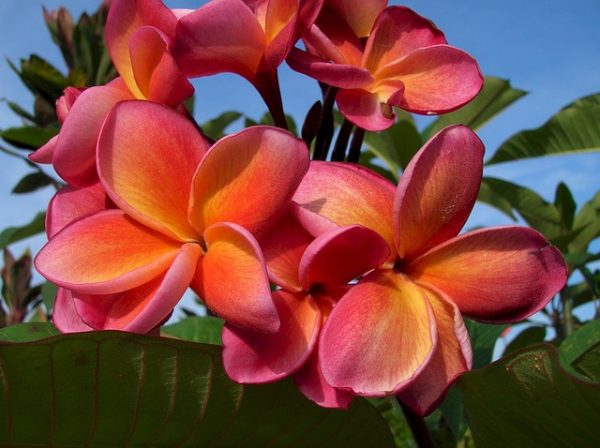

Add comment